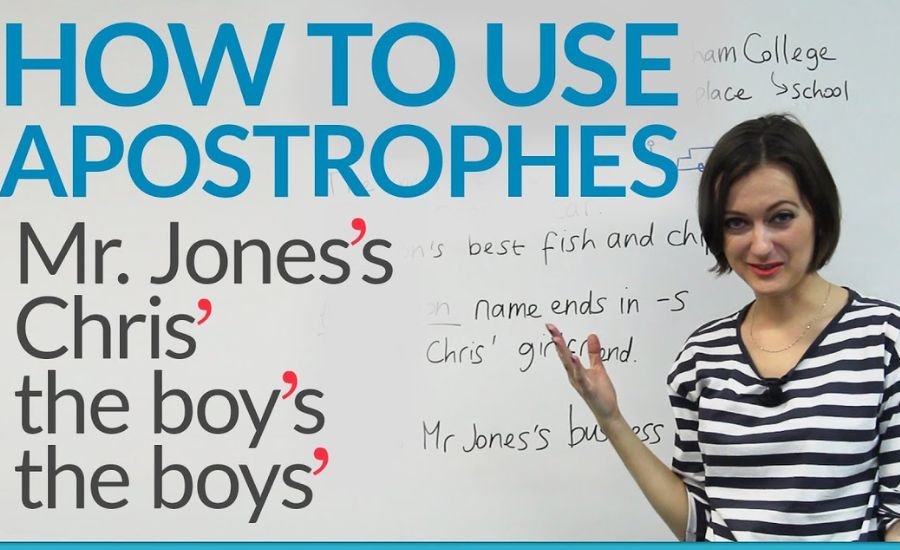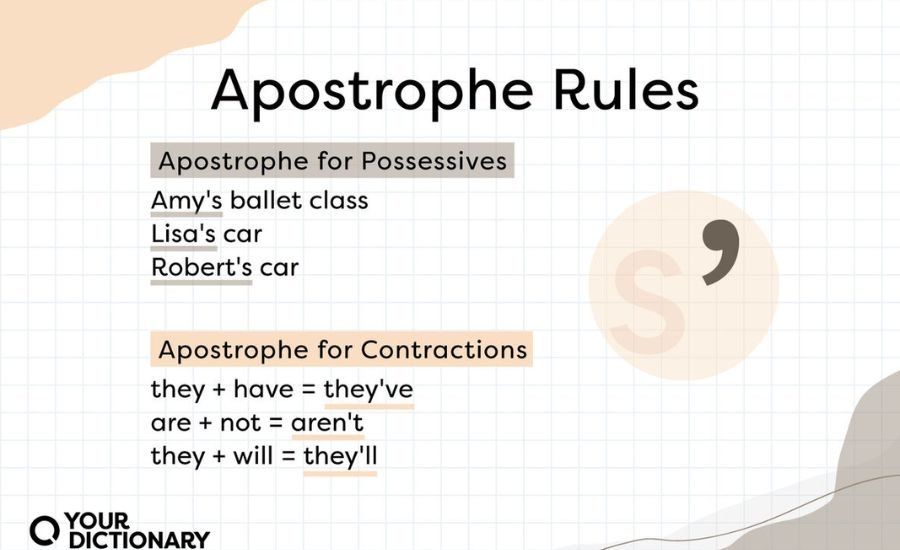The ápostrophe is a tiny yet mighty punctuation mark that can transform your writing from confusing to clear. This often misunderstood symbol serves essential functions, such as indicating possession, creating contractions, and preventing ambiguity. Whether you’re a student crafting essays or a professional drafting emails, mastering the use of the ápostrophe is crucial for effective communication.
Despite its small size, the ápostrophe can lead to significant errors if used incorrectly. Many writers struggle with the distinction between “it’s” and “its,” or how to properly show possession with names ending in “s.” In this guide on Wiki247, we will explore the various uses of the ápostrophe, highlight common mistakes to avoid, and provide practical tips to enhance your writing clarity.
What Is the Ápostrophe? A Basic Overview
The ápostrophe is a small punctuation mark used in writing. It looks like a tiny comma and is used for two main reasons: to show possession and to make contractions. Understanding what the ápostrophe does is very important for clear writing.
In English, the ápostrophe can help us know if something belongs to someone. For example, in the phrase “Sara’s book,” the ápostrophe shows that the book belongs to Sara. Without it, the meaning can change. Knowing how to use the ápostrophe correctly helps avoid confusion in sentences.
Another important use of the ápostrophe is in contractions. Words like “don’t” or “it’s” combine two words. Here, the ápostrophe replaces the missing letters. This makes our writing sound more natural and conversational, which is useful in everyday writing.
The Importance of the Ápostrophe in Clear Communication
Using the ápostrophe correctly is essential for clear communication. When we use it right, our readers can understand our message easily. Mistakes with the ápostrophe can lead to misunderstandings. For example, “its” shows possession, while “it’s” means “it is.” Mixing these up can confuse the reader.
In professional writing, correct use of the ápostrophe is even more important. Imagine sending an email with the wrong punctuation! It can make your message look unprofessional. By mastering the use of the ápostrophe, you can make sure your writing is taken seriously.
Clear communication is key in all types of writing. Whether you’re writing a story, an email, or a report, the ápostrophe helps keep your ideas organized and easy to follow. Remember, the clearer your writing, the better your readers will understand your thoughts.
How to Use the Ápostrophe for Possession
To show possession with the ápostrophe, we place it before the “s” for singular nouns. For example, in “the dog’s collar,” the ápostrophe tells us that the collar belongs to one dog. It’s easy to remember this rule!
When dealing with plural nouns that end in “s,” the ápostrophe goes after the “s.” For instance, “the teachers’ lounge” indicates that the lounge belongs to many teachers. This simple rule helps us write clearly about who owns what.
If a name ends in “s,” like “James,” you can add an ápostrophe and another “s” to show possession. So, you would say “James’s book.” However, some style guides allow just an ápostrophe after the “s” (like “James’ book”). It’s good to stay consistent in your writing!
Mastering Ápostrophes in Contractions: Tips and Tricks
Contractions are formed when we combine two words and leave out some letters. The ápostrophe takes the place of the missing letters. For example, “don’t” is short for “do not.” Knowing how to create contractions makes our writing sound more friendly and casual.
More Tips and Tricks for Mastering Ápostrophes in Contractions:
- Practice Common Contractions: Familiarize yourself with common contractions like “can’t” (cannot), “won’t” (will not), and “I’m” (I am). Knowing these will help you use them naturally in your writing.
- Use Context Clues: When writing, think about the context. If you’re writing a casual email to a friend, contractions can make it feel friendly. However, for formal documents, it’s best to avoid them for clarity.
- Read Aloud: Reading your sentences aloud can help you hear how contractions fit into your writing. If a sentence sounds awkward without the contraction, consider using it.
- Make a List: Create a list of contractions you use often and keep it handy. This can serve as a quick reference to ensure you’re using them correctly.
- Check for Confusion: Be on the lookout for commonly confused words like “they’re,” “their,” and “there.” Make sure you’re using the right one for your sentence to avoid confusion.
- Revise with Care: When you proofread your work, check for contraction usage. Make sure that your contractions fit the tone and style of your writing.
Common Mistakes: The Battle of It’s vs. Its
One common mistake involves confusing “it’s” and “its.” “It’s” is a contraction that means “it is” or “it has.” For example, “It’s raining outside” means “It is raining outside.” Knowing this will help you use the correct form.
| Term | Meaning | Example |
| It’s | Contraction for “it is” or “it has” | “It’s raining outside.” (It is raining outside.) |
| Its | Possessive form of “it” | “The cat licked its paws.” |
One common mistake involves confusing “it’s” and “its.” “It’s” is a contraction that means “it is” or “it has.” On the other hand, “its” shows possession. These two words are often mixed up, so it’s crucial to remember their different uses. To avoid this mistake, try reading your sentences out loud. Practicing these distinctions will make your writing clearer and more professional.
Plural Nouns and the Ápostrophe: When to Use It
A common mistake is using the ápostrophe to make plural forms of nouns. Remember, we do not need an ápostrophe to form plurals. For instance, saying “apple’s” to mean more than one apple is incorrect. The correct way is simply “apples.”
The only exception to this rule is when you need to clarify lowercase letters. For example, “Mind your p’s and q’s” helps readers avoid confusion about the letters. In this case, the ápostrophe is helpful!
When writing numbers or abbreviations, don’t use an ápostrophe to make them plural. Instead of “the 1990’s,” say “the 1990s.” This simple rule keeps your writing clean and easy to read.
You May Also Like: U231748506
Professional Writing and the Ápostrophe: Best Practices

In professional writing, proper use of the ápostrophe is key to maintaining a polished image. Mistakes with punctuation can make your work look careless. Always proofread your writing to catch any errors before sending it out.
Using a consistent style guide helps ensure that your use of the ápostrophe is correct. Guides like APA or Chicago Manual of Style provide clear rules on punctuation, including how to handle the ápostrophe. Following these guidelines enhances your credibility.
When communicating in a business setting, clarity is essential. The ápostrophe plays a big role in making sure your ideas are understood. Whether writing emails, reports, or proposals, use the ápostrophe correctly to maintain a professional tone.
Exercises to Master the Ápostrophe
To master the ápostrophe, practice is important. Start by finding examples of writing that contain errors with the ápostrophe. Try correcting them to reinforce your understanding. This exercise helps you recognize common mistakes.
Another great way to learn is by writing your own sentences. Include both possessive forms and contractions in your practice. Writing in context makes it easier to remember the rules about the ápostrophe.
Finally, consider exchanging your writing with a friend or classmate. Reviewing each other’s work is a helpful way to learn. Providing and receiving feedback can improve your skills with the ápostrophe.
Resources for Further Learning About the Ápostrophe
If you want to learn more about the ápostrophe, many resources are available. Websites like Grammarly and Purdue OWL provide detailed explanations of punctuation rules, including the ápostrophe. These sites are great for quick references.
Additional Resources for Further Learning About the Ápostrophe:
- Grammar Girl’s Quick and Dirty Tips
Grammar Girl provides straightforward explanations and tips for understanding various grammar rules, including the ápostrophe. Her podcast and website offer practical advice that is easy to follow. - Cambridge Dictionary Online
The Cambridge Dictionary website has a section dedicated to punctuation. It includes explanations and examples of how to use the ápostrophe correctly in both British and American English. - The Chicago Manual of Style Online
The Chicago Manual of Style is a respected resource for writers and editors. Their online platform includes detailed guidelines on punctuation, including the proper use of the ápostrophe. - YouTube Grammar Channels
There are numerous YouTube channels dedicated to grammar education, such as “English with Lucy” and “Khan Academy.” These channels often include video tutorials on punctuation, making it easier to understand the ápostrophe through visual learning. - Writing Centers at Universities
Many universities offer online writing centers that provide resources for grammar and punctuation. These centers often have guides specifically about the ápostrophe and how to use it correctly in academic writing. - Online Grammar Checkers
Tools like ProWritingAid and Hemingway App not only check for grammar mistakes but also offer explanations for errors. Using these tools can help reinforce your understanding of the ápostrophe in your writing. - Community College Courses
Many community colleges offer courses focused on writing and grammar. These classes can provide personalized instruction and practice with punctuation, including the ápostrophe, in a supportive environment.
Engaging with these resources will give you a well-rounded understanding of the ápostrophe and improve your overall writing skills.
Conclusion
In conclusion, understanding the ápostrophe is very important for clear and effective writing. It helps us show possession and create contractions, making our sentences easier to read. When we use the ápostrophe correctly, we can avoid confusion and help our readers understand our ideas better. Remember, practice is key! The more you use it, the easier it will become.
Don’t forget that making mistakes is part of learning! Everyone makes errors sometimes, so don’t feel bad if you mix things up. Just keep practicing, and soon you will be a pro at using the ápostrophe. With these tips and tricks, you’ll be able to write clearly and confidently. Happy writing!
Read Next: Shondel Bodden
FAQs
Q: What is an ápostrophe?
A: An ápostrophe is a punctuation mark used to show possession or to indicate that letters have been omitted in contractions. For example, in “Sarah’s book,” the ápostrophe shows that the book belongs to Sarah.
Q: How do I use an ápostrophe to show possession?
A: To show possession, place the ápostrophe before the ‘s’ for singular nouns (e.g., “the cat’s toy”) and after the ‘s’ for plural nouns that end in ‘s’ (e.g., “the teachers’ lounge”). For plural nouns that do not end in ‘s,’ add ‘s (e.g., “the children’s playground”).
Q: What is the difference between “it’s” and “its”?
A: “It’s” is a contraction for “it is” or “it has,” while “its” shows possession, indicating that something belongs to “it.” For example, “It’s sunny” means “It is sunny,” whereas “The dog wagged its tail” shows that the tail belongs to the dog.
Q: Can I use an ápostrophe to make plurals?
A: No, you should not use an ápostrophe to make nouns plural. For example, the correct form is “apples” for more than one apple, not “apple’s.”
Q: Are there exceptions to the rules for using ápostrophes?
A: Yes, an exception is when pluralizing lowercase letters to avoid confusion. For example, you can write “Mind your p’s and q’s.”
Q: Why are ápostrophes important in writing?
A: Ápostrophes are important because they clarify meaning and prevent misunderstandings in sentences. Using them correctly enhances readability and professionalism in your writing.




